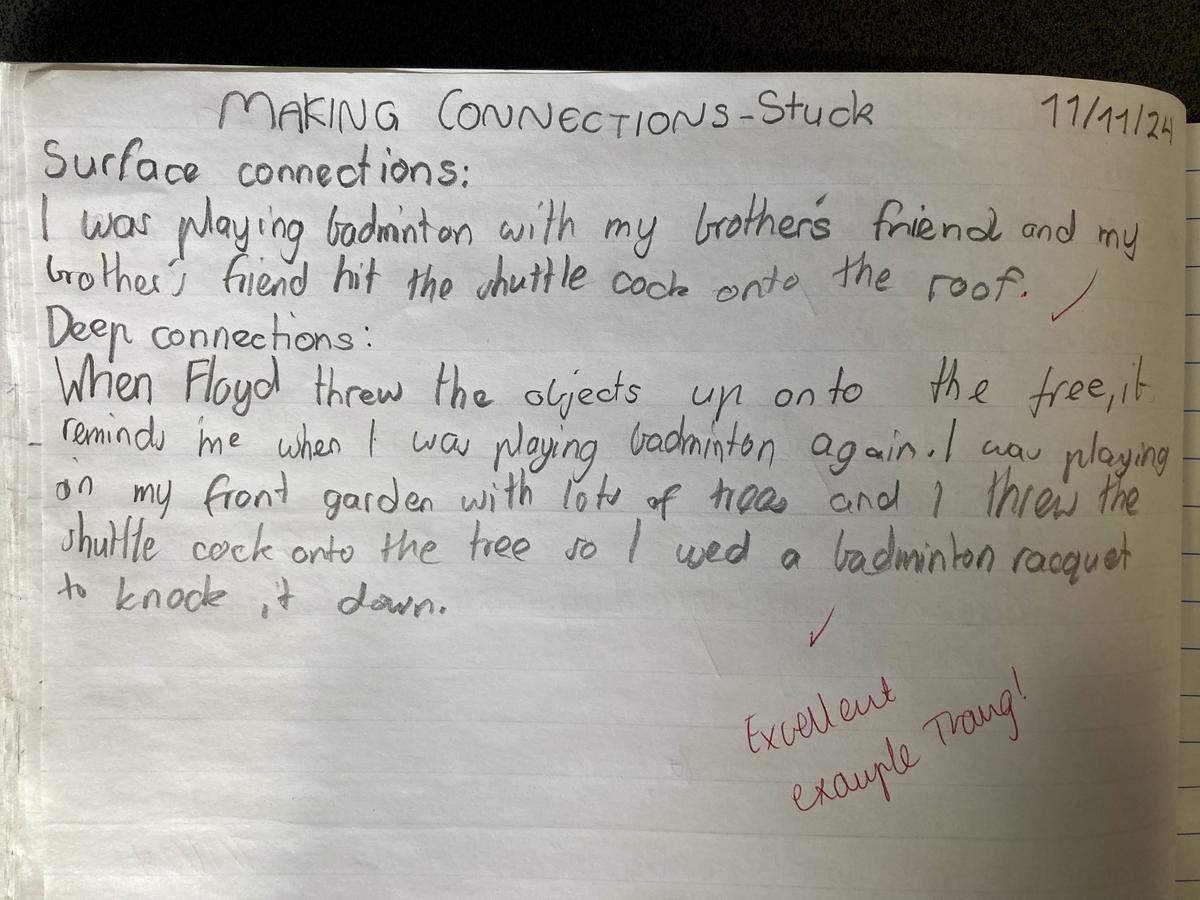Year 4: Literacy

Reading
In Reading, the Year 4 students have been using the Fountas and Pinnell wheel and thinking beyond the text by making connections. When we make connections we connect the text to our personal and world knowledge as well as other texts. The strategy promotes engagement while reading and, in turn, a deep understanding of the text. This week we explored texts by Oliver Jeffers such as Stuck, Lost and Found and The Day the Crayons Quit.
Writing
In Writing, the Year 4 students have been doing a wonderful job of finalising their persuasive writing pieces. They have followed the writing process by prewriting, drafting, revising, editing and then publishing their persuasive texts. We are then moving onto narrative texts. Writing a narrative text involves telling a story, whether it's fictional or based on real experiences.
Key Elements of a Narrative Text:
Characters: The individuals who drive the story. They can be protagonists (main characters) or antagonists (opposing characters).
Setting: The time and place where the story occurs. This helps to create context and mood.
Plot: The sequence of events that tells the main story. It typically includes an introduction, rising action, climax, falling action, and resolution.
Conflict: The central challenge or problem that the characters face, which drives the narrative.
Point of View: The perspective from which the story is told (first-person, second-person, third-person).








